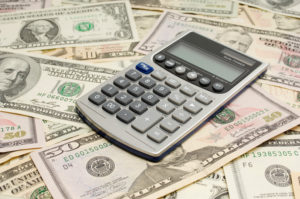
Amortization and depreciation have some similarities, but they are means of calculation with a distinct difference.
If a company acquires assets like company vehicles, corporate headquarters, or patents, these assets are expected to provide benefits to the company over an extended period rather than just in the period they are acquired. To reflect this expected value and usage of these assets, businesses can choose to expense the cost of these assets each year over their useful life through amortization or depreciation methods, ultimately reducing the tax liability of the business.
Those two main methods of calculating the value of these assets—amortization and depreciation—are as similar as they are different. The primary difference between the two methods involves the type of asset being expensed. Depreciation is the method used for tangible assets, such as property, plant, and equipment, whereas amortization is used for intangible assets, such as patents, copyrights, and goodwill.
What is Amortization?
Amortization is the practice of spreading out the cost of an intangible asset over its useful life. Intangible assets are those that lack physical substance but still hold value, such as patents, trademarks, copyrights, and franchise agreements. By expensing the cost of these assets over time, businesses can more accurately reflect their ongoing benefit to the company and reduce their tax liability.
Amortization is typically done on a straight-line basis, meaning that the same amount is expensed in each period over the asset’s useful life. While the concept of amortization is similar to that of loan amortization, where a series of loan payments consisting of both principal and interest is calculated, the two are distinct practices with different applications.
What is Depreciation?
Depreciation of a fixed asset refers to the gradual decrease in the value of the asset over its useful life. Fixed assets are long-term assets that a company owns and uses to generate revenue, such as buildings, machinery, equipment, and vehicles. As these assets age and are used, they experience wear and tear, and their value gradually declines.
Depreciation is a way to account for this decline in value over time, and it is recorded as an expense on the company’s income statement. By reducing the value of the fixed asset over time, the company can accurately reflect the asset’s declining value in its financial statements and more accurately determine its net income. This is important for tax purposes and financial reporting, as well as for making informed decisions about when to replace or upgrade fixed assets.
Trust the Professionals at the Harding Group
Unlike other accounting firms, The Harding Group, located in Annapolis, MD, will never charge you for consultations and strive for open communication with our clients.
Are you interested in business advising, tax preparation, bookkeeping and accounting, payroll services, training + support for QuickBooks, or retirement planning? We have the necessary expertise and years of proven results to help.
We gladly serve clients in Annapolis, Anne Arundel County, Baltimore, Severna Park, and Columbia. If you are ready to take the stress out of tax time, contact us online or give us a call at (410) 573-9991 for a free consultation. Follow us on Facebook, Twitter, YouTube, and LinkedIn for more tax tips.


 Back
Back